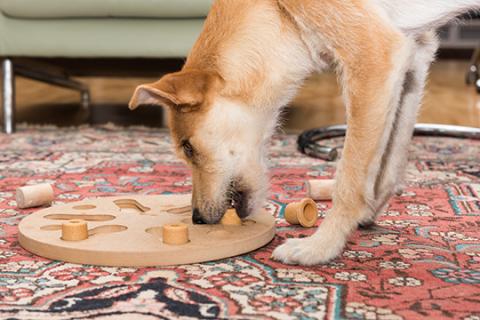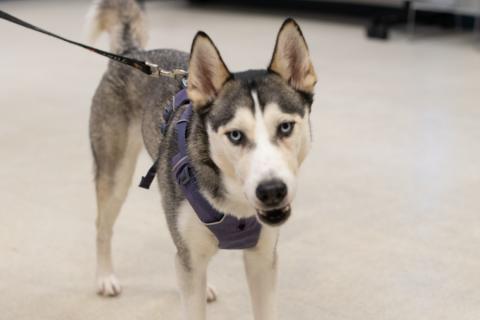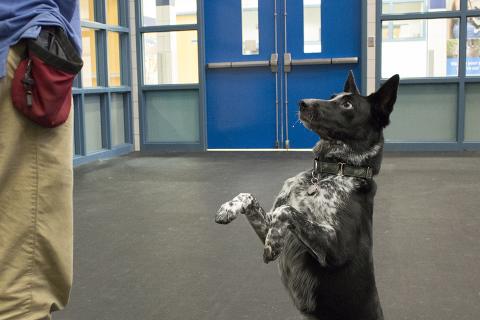
If you’ve recently adopted an animal — especially a dog or puppy — your friends, family, trainers, and even unsolicited strangers on the street have probably told you: “Make sure you use positive reinforcement training.”
Seems simple enough. Stock up on treats and prepare to give all the pets and belly rubs — sounds like a great time for you and your pet! But what does positive reinforcement really mean? You might be surprised.
Defining the basics of positive reinforcement training
Before we dive in, let’s cover some basics.
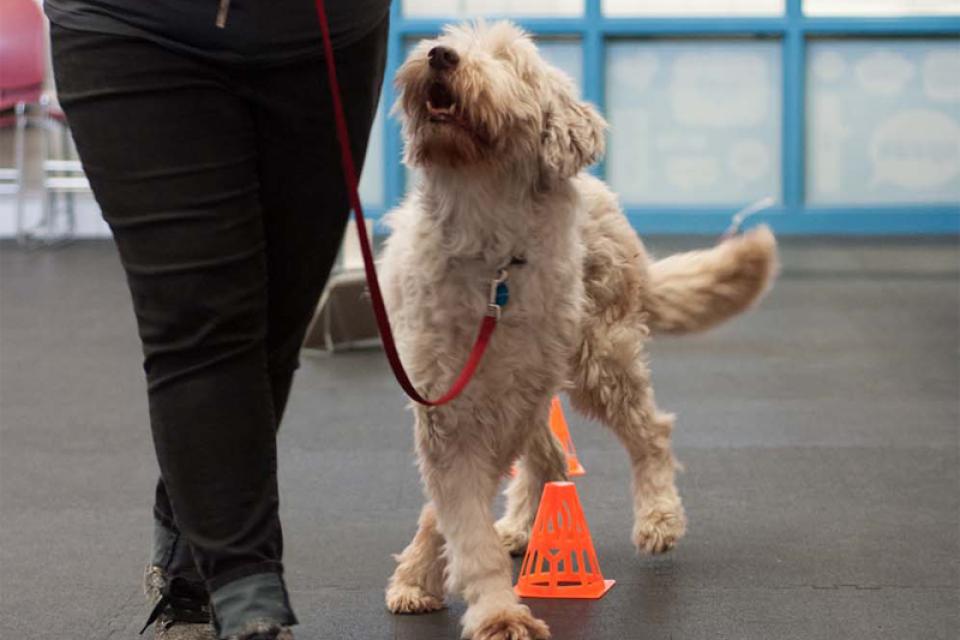
Training your pup using positive reinforcement means you’re adhering to the principles of operant conditioning. That’s basically just a fancy term for adding or removing a punishment or reward.
There are four types of operant conditioning.
- Positive reinforcement
- Positive punishment
- Negative reinforcement
- Negative punishment
Positive means you’re adding something to your dog’s environment. People usually associate this with treats, praise, and affection. But yelling, scolding, or swatting also fall into this category because they are being added. The stranger offering you training advice at your local coffee shop probably didn’t know that!
Negative means that you’re removing something from your dog’s environment. Taking away a toy, turning your back on a jumping dog, or ignoring your pup when he barks at you for attention are all examples of this. So are techniques like releasing leash pressure when your dog is heeling on a walk or ending restraint when your pup stops wiggling.
- Reinforcement makes a behavior occur more often.
- Punishment makes a behavior occur less often.
Training technique examples
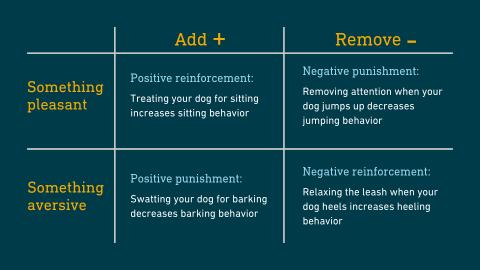
AHS only supports humane and compassionate training methods based on an understanding of how animals learn. As you can see in the examples above that includes both positive reinforcement and negative punishment. Removing opportunities for unwanted behavior is just as important as rewarding the behaviors you do want.
While positive punishment and negative reinforcement methods may seem to work at first, they can cause long lasting issues for you and your pup. For example, hitting your dog for barking at new people may quiet your dog for a while. But eventually your pooch will learn to associate new people with fear and pain, which can lead to worse behaviors than barking.
Here’s the bottom line, folks: Training isn’t always easy, but it should always be enjoyable for both you and your pet. Training is an opportunity to strengthen the bond you have with your furry friend. If either of you are feeling stress, frustration, or pain, it’s time to re-evaluate your methods.
Looking for a positive reinforcement trainer in Minnesota?
When it comes to training your furry friend, remember: You’re not alone! AHS has tons of training resources, including a behavior helpline, as well as fun training classes led by behavior experts. Find a training class that fits your dog's needs today!
